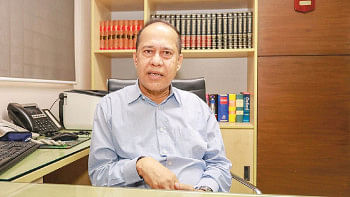Getting the measurements right

Monitoring and evaluation are proven tools to determine the extent to which public sector development projects and programmes are on track and if adjustments are required to improve their performance. For the last three decades, these tools are being increasingly employed around the world to help assess performance, improve organisational learning and make informed decisions about programme operation and service delivery.
The need for quality data increased globally since the turn of this century due to the requirements for country-level progress reporting towards achievement of the United Nations Millennium Development Goals (MDG). Due to both global demand and donor-funded project requirements, a country led monitoring and evaluation (M&E) system development became a necessity to gauge the achievement of results in a variety of public sector programmes such as in health, basic education, agriculture, infrastructure, utility services and others that are mainly funded from government budget. A good M&E system can provide timely and reliable information for continuous learning and adjustment of inputs and activities that help achieve the desired social outcomes and impacts. These are also a means to verify that the earmarked project funds are being well managed and spent for the desired purposes.
It is necessary to distinguish between monitoring and evaluation. Monitoring is a continuous assessment of performance of implementation of all activities under a project or programme aimed at providing a set of information to the senior managers on an ongoing basis for them to decide if all planned inputs are delivered on time at a minimum cost. Monitoring entails a regular and systematic collection of data and analysis of information to track the progress of programme implementation vis-à-vis the planned targets to achieve the ultimate objectives of the programme. Monitoring is also a tool for assessing regular service delivery by the public sector; for example, in the education sector, if all text books were printed and delivered to the students at the beginning of the year as planned.
Evaluation is conducted periodically, commonly at the middle or end of a programme or project cycle to learn about their achievements or final results; if intended beneficiaries have been reached and if the causal relationships between the initiatives implemented and the results achieved can be established. It looks at both the positive and negative aspects and also explores the issues faced during the implementation period. It explores what worked and what did not work so well and recommends improvements of similar initiatives in future. Conducting evaluation requires good training on its techniques, methodologies, sampling design and often requires a team effort with capacities in different backgrounds. A well conducted evaluation can help with the designing of qualitatively better development projects and programmes in the future. For instance, if an evaluation of a rural health centre construction project comes out with the finding that not enough waiting space was kept at the outdoor, in view the future growth of population in the area, an evaluation recommendation could be to construct future health centres with more waiting spaces. Sometimes government pilot projects are evaluated with a view to explore the prospect of scaling them up. This type of evaluation looks more closely at the cost implications of scaling up, ways to reduce cost at different stages and their wide-ranging benefit potentials.
In order to better utilise the M&E tools, it is advisable that an M&E framework and an M&E plan are designed at the programme formulation stage so that appropriate short and long term indicators are established as part of the planning process and they can be measured throughout the implementation period. This will give the programme managers and decision makers signals at an early stage about the performance of the implementation of the programme and enable them to take corrective measures whenever required. This advance information is crucial in order to avoid unforeseen situation from arising and help timely and successful completion of the programme and achieve the desired results.
Both monitoring and evaluation are management tools and are means to ensure accountability and transparency. The government should establish a good M&E system to generate timely and accurate data, create an effective management information system and make them available for better decision-making and future planning. M&E can improve implementation performance of the development programmes and functioning of the public sector service delivery system. In today's increasingly competitive environment, knowledge and learning in the public arena and utilisation of quality information are crucial for attaining Sustainable Development Goals and achieving the development objectives of the government. The M&E skills, technical competencies along with motivation for using knowledge are crucial elements of a better governance system. Allocation of increased amount of resources is also essential for building a stronger M&E system in the country.
Dr Nawshad Ahmed is an economist and urban planner. He worked previously as a UN official in Bangladesh and abroad.

 For all latest news, follow The Daily Star's Google News channel.
For all latest news, follow The Daily Star's Google News channel. 



Comments